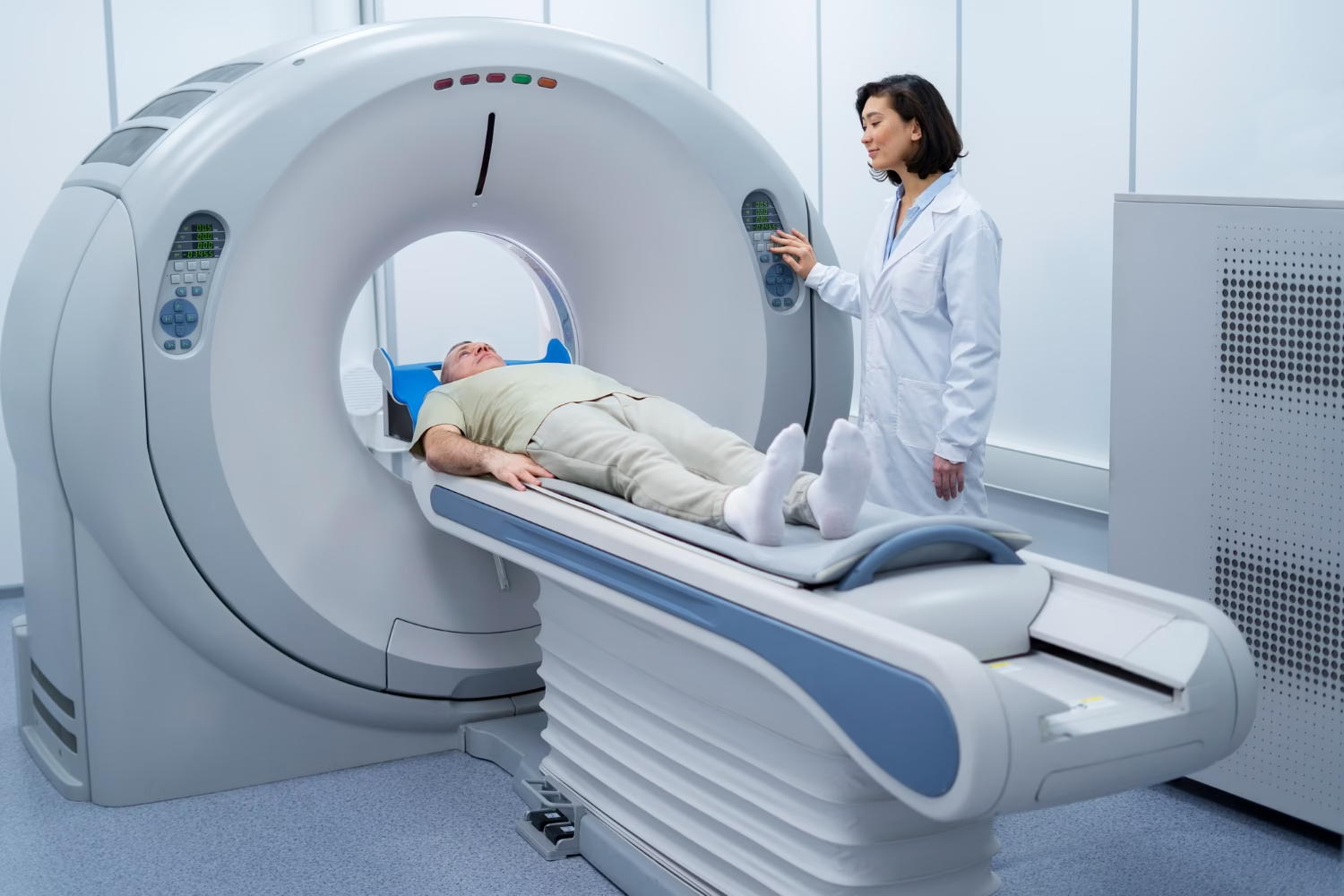What if we told you that a person walking around with 90% heart blockage can feel completely fine — no chest pain, shortness of breath, or a twinkle of discomfort? Sounds bizarre, right? But it is a dangerously everyday reality— especially in India. You also might be reminded of the time when you or any of your known people got diagnosed with 90% heart blockage without any prior symptoms. Silent heart disease is among the top causes of sudden cardiac death. For many, a critical heart blockage goes undetected until a routine checkup or a traumatic incident, such as a heart attack. If you have just been diagnosed with 80–90% heart blockage in these arteries, don’t panic. Help is available with SAAOL Heartcare Delhi’s non-invasive heart treatment, such as EECP therapy in Delhi/NCR, which now provides a safe and effective alternative to stents and bypass surgery. Here’s what you should know from Dr. Bimal Chhajer before determining what’s next.
Silent Heart Disease (Myocardial Ischemia): When Your Heart Suffers in Silence
Silent myocardial ischemia (SMI) is a silent killer. SMI flies under the radar, unlike the dramatic, chest-clutching scenes we associate with heart issues. It’s a condition in which the heart muscle isn’t getting a sufficient supply of oxygen-rich blood, but you have no (that you know of) symptoms. This is not surprising, as AHA studies indicate that a large proportion of ischemic events are indeed silent.
Why No Heart Disease Symptoms? The Body’s Mysterious Ways
And you might think, “If my artery is 90% blocked, shouldn’t I feel something? Not really, and here’s why:
Neurological Factors: Diabetes can cause neuropathy, destroying the nerves that would normally signal pain when the heart is in distress. Basically, your body’s alarm system is turned down to zero.
Collateral Circulation: The human body is impressively adaptable. Over time, it can create new blood vessels to reroute blood around clogged arteries, a process called collateral circulation. This can help supply blood to the heart, but it may also mask the true extent of blockages.
Slow Progression: If a blockage forms at a slow rate over a long time, the body adapts to the lower blood flow. This slow adaptation can mean that large blockages may not cause the acute symptoms you would anticipate.
The Hidden Dangers: More Than Just a Blocked Pipe
Although you may have no symptoms, a 90% heart blockage is a perfect time bomb. Here’s what may follow if it is not tackled:
- Sudden Cardiac Death: Without warning signs, the risk of a fatal heart attack increases. Silent ischemia has been linked to sudden cardiac death, making it a silent but deadly condition.
- Heart Failure: Prolonged oxygen deprivation can damage or lead to weak heart muscle, resulting in heart failure, a condition in which the heart is unable to pump blood effectively to meet the body’s demands.
- Arrhythmias: Gradual lack of blood flow can interfere with the heart’s electrical system, causing irregular heartbeats, a condition that can exacerbate cardiac health.
Who’s at Risk? Identifying the Warning Signs of Heart Disease
Some are more susceptible to silent heart disease, including those with:
- Diabetes Mellitus: In diabetics with damage to their nerves and deficiencies in the perception of pain, the signs of heart blockage may be muted.
- Hypertension (High Blood Pressure): High blood pressure damages arteries over time and eventually gives rise to blockages.
- Hyperlipidemia (high cholesterol): Too much cholesterol can cause plaque deposits to accumulate in arteries, narrowing them and hampering blood flow.
- Smoking: Tobacco consumption speeds up hardening and narrowing of the arteries.
- Family History: If you have genetic factors, a family history of heart disease can increase your risk.
- Sedentary Lifestyle and Obesity: Inactivity and overweight lead to heart disease.
Heart Disease Detection: Revealing the Silent Killer

Proactive and early detection is critical because silent heart disease does not announce itself with symptoms:
- Electrocardiogram (ECG or EKG): This test records the electrical activity of the heart and can reveal abnormalities indicative of ischemia.
- Stress Testing: By monitoring the heart during physical exertion, doctors can identify issues that might not be apparent at rest.
- Holter Monitoring: Wearing a portable device that records heart activity over 24-48 hours can detect intermittent problems.
- Coronary (CT) Angiography: This imaging technique provides a detailed view of the heart’s blood vessels, highlighting blockages.
Heart Disease Management: How to Take Charge of Your Cardiovascular Health
Addressing a significant blockage, even without symptoms, is vital:
Lifestyle Modifications
- Diet for a healthy heart: Fruits, vegetables, whole grains, and protein. Reduce saturated fats, trans fats, and sodium. You can successfully dodge the risk of heart disease if you apply the Zero-oil cooking technique in your daily meals.
- Exercise regularly – SAAOL Heartcare Delhi recommends at least 150 minutes of moderate-intensity exercise per week.
- Quit Smoking: Tobacco cessation slows the advancement of heart disease
- Weight Control: Being at a healthy weight reduces the strain on your heart.
Medications
- Antiplatelet Agents — Blood-thinning medications such as aspirin.
- Statins: Medication used to decrease cholesterol.
- Beta-Blockers and ACE Inhibitors: They control blood pressure and lessen the burden on the heart.
You don’t have to have crushing chest pain or dramatic shortness of breath to have a serious heart problem. But that’s the insidious part of 90% heart blockage and no symptoms popping up over a decade and a half — it saps your heart’s raw power and your sense of security, until one day, it’s too late.
So let this be your wake-up call.
If you have a 90% blockage and you are asymptomatic, don’t brush it off. “Don’t fall in the trap of ‘I’m doing fine, so I must be fine.’ Your heart doesn’t always send sirens the traditional way, but that doesn’t mean it isn’t quietly struggling to catch up.
What You Should Do Right Now

Let’s not complicate this. To help you get started, here’s a checklist you can implement now:
- Get a second opinion, especially from a non-invasive cardiology expert, Dr. Bimal Chhajer. At SAAOL Heart Centre, we provide non-surgical heart treatment that helps with blockages but does not require a stent or bypass—EECP therapy that has turned the lives of 6 lakh+ people who even had a blockage of high percentages but only low symptoms.
- Request for an EECP assessment – Enhanced External Counter Pulsation, a non-invasive treatment that increases blood flow and establishes natural bypasses in the heart. It’s FDA-approved, painless — and in many cases, can help patients with 80–90% blockages avoid bypass surgery.
- Book a preventative heart screening – Even if you feel fine, particularly if you’re diabetic, hypertensive, obese , or over 45.
- Start keeping a heart journal – Note your energy levels, sleep, diet, any palpitations, swelling, or even mood changes. You’ll be surprised how patterns emerge.
- Don’t wait for a symptom. Focus on the diagnosis and don’t wait for the symptoms to appear dramatically.
To Conclude: Words from the Heart – To the Heart
There’s a kind of power in listening to your body before it starts screaming.
90% of blockage with no symptoms might sound to you like you are winning the odds, however, the truth is that you’re walking on thin ice. And you deserve better. You have every right to be informed about your condition, examine all the treatment options available to you, and make a choice not out of fear or pressure—but a choice born of science, knowledge, and trust.
If no one has informed you of this yet, allow us to be your first:
You should not panic — but you absolutely must act.
If you are searching for a non-invasive solution with an 80–90% blockage who don’t need stents or bypass, visit the heart specialists at SAAOL Heart Centre Delhi. We’re here to lead you back to health with evidence-based care, a whole-body approach to heart health, and therapies that give your heart a second chance — without the knife.
Schedule your consultation and let your heart know it is FINALLY getting heard.


